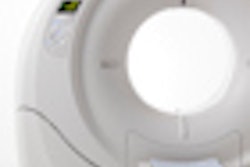
When requests for CT are rejected, it's essential for radiologists to provide their contact details and include a reason for rejection, because this can boost patient care and ensure clinicians provide better information on future requests and select the appropriate imaging exam, U.K. researchers have found.
"If CT requests are rejected, it is important that a reason is given and contact details (name and phone or bleep number) are provided to allow the referring clinician to plan further management for their patient," noted Dr. Davina Mak, from Heartlands Hospital, Heart of England National Health Service (NHS) Foundation Trust in Birmingham. "Not providing this information can delay patient care."
Along with co-author Dr. Shahid Hussain from the same hospital, Mak conducted a retrospective audit of all rejected CT requests using the radiology information system during a one-month period (April 2012) at all three hospital sites in the NHS Foundation Trust. She presented the findings at the 2013 U.K. Radiological Congress (UKRC) held in Liverpool.
The total number of rejections was 146, of which 42 were excluded from the study due to duplication (18 cases), the clinician cancelling the scan (12), human error (seven), the patient being too unwell (three), re-request for the scan as an in-patient (one), and wrong patient (one).
For the remaining 104 rejections, a reason was given in 94% of cases, but only 66% of radiologists provided their contact information for follow-up.
About 35% of requests were rejected because there was no indication for the scan, and another 21% were rejected due to the lack of clinical information. This suggests a need for providing further guidelines or training for referrers, according to Mak. Another 15% of requests were rejected so there could be a discussion with the radiologist, while another modality was advised in 16% of cases. In 7% of cases, contrast was contraindicated, and no reason for rejection was given in 6% of cases.
Following the rejections, there were no further CT requests in 50% of the 104 cases, which suggests that requests are being rejected appropriately. In 21% of cases, another modality was requested. In 18% of cases, there was a re-requested CT scan with more clinical information, and in another 7% of cases, a CT scan was requested again after discussion with the radiologist. In 4% of cases, another request for CT was made without any discussion or extra clinical information.
The U.K. Ionising Radiation (Medical Exposure) Regulations (IR[ME]R) state that the referrer should provide adequate clinical information for the practitioner to be able to justify examinations, Mak pointed out.
In another UKRC 2013 presentation, a group from the Mid Cheshire Hospitals NHS Foundation Trust reported the introduction of electronic requesting may avoid problems encountered with paper forms by making it mandatory to complete the key parameters.
"Educating clinicians at grand rounds and hospital inductions could be one way forward," stated lead author Dr. Mubeen Chaudhry, a specialist registrar in radiology. "The adequate completion of the radiology request form is an important component in subsequent patient management and therefore clinical information and the radiological question that needs answering are two vital pieces of information for radiographic and radiological staff."
Getting a relevant staff member from the accident and emergency unit to conduct an audit, along with the radiology department, can give them more ownership of data and willingness to tackle the problems until they're resolved, the authors concluded.



















